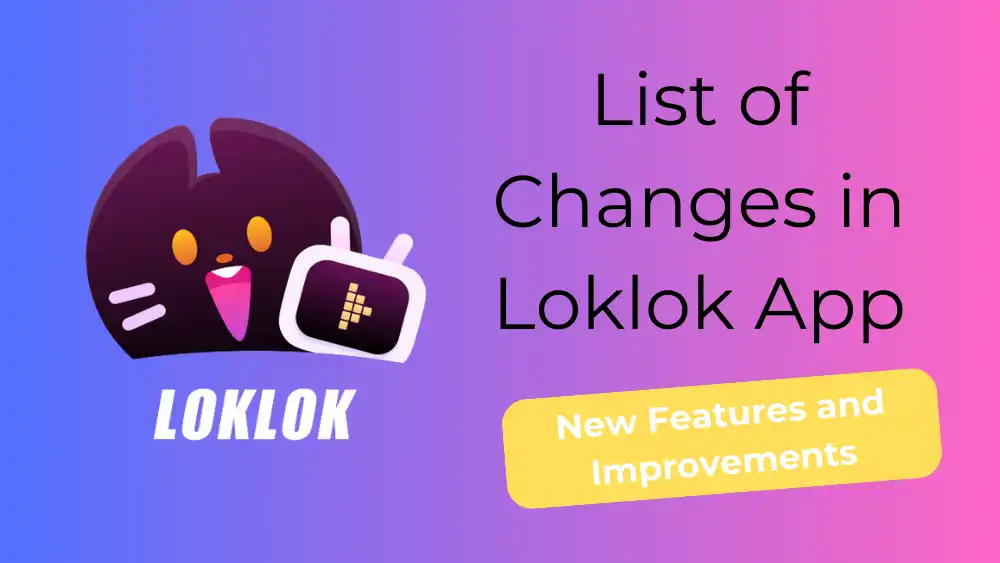Loklok Vs Youtube – Which Has Better Content?
The streaming landscape presents two distinct approaches to content delivery, with Loklok and YouTube serving vastly different audiences and purposes. Loklok specializes in showcasing Asian entertainment, offering licensed movies and TV shows with professional production quality.
YouTube operates as a global video-sharing platform, featuring user-generated content across unlimited categories and topics.
Each platform brings unique advantages to viewers, but determining which offers superior content depends on specific user preferences and viewing habits that reveal surprising insights.

Also Read: Loklok Vs Youtube
Content Library Size and Diversity Comparison
The content libraries of Loklok and YouTube differ markedly in both size and variety, offering users distinct viewing experiences.
YouTube boasts billions of videos across countless categories, from educational tutorials to entertainment vlogs, created by millions of global users.
Loklok focuses primarily on movies and TV shows, featuring organized selections from various genres including drama, comedy, and action. The platform provides an ad-free experience with its streamlined interface, contrasting with YouTube’s ad-supported model.
Loklok specializes in hand-picked movie and TV content, spanning multiple genres from dramatic series to action-packed blockbusters.
Content licensing affects both platforms differently, with YouTube relying on user-generated content and Loklok securing rights for premium entertainment.
Regional restrictions impact availability on both services, though YouTube’s vast creator network provides more diverse content options for most users worldwide.
Loklok’s content library includes multilingual subtitles for global accessibility, making international movies and TV shows more accessible to diverse audiences compared to YouTube’s primarily user-generated subtitle system.
Also Read: Loklok Vs Disney+
Video Quality and Streaming Performance
Video quality and streaming performance represent critical factors that directly impact user experience on both platforms. YouTube typically offers multiple resolution options ranging from 144p to 8K, with adaptive bitrate streaming that adjusts quality based on internet connection speed.
Loklok’s streaming capabilities, buffering efficiency, and available resolution settings determine how smoothly content plays across different devices and network conditions.
The platform’s multi-language subtitles enhance the viewing experience by providing synchronized translations that seamlessly sync with scenes across international content.
LOKLOKMODS focuses on providing an immersive media experience through swift updates and optimized streaming performance tailored to meet diverse user needs.
Resolution and Bitrate Comparison
YouTube supports resolutions up to 8K with adaptive bitrate streaming, automatically adjusting quality based on internet connection speed.
The platform utilizes advanced video compression technologies and multiple streaming protocols to deliver consistent playback across devices.
Loklok typically offers lower maximum resolutions, often capping at 1080p or 720p depending on content availability.
YouTube’s superior infrastructure provides more consistent bitrate delivery, resulting in fewer buffering interruptions and smoother progressions between quality levels during playback sessions.
Buffering and Load Times
Although video resolution sets quality expectations, buffering performance and load times determine whether viewers can actually enjoy that content without interruption.
YouTube’s extensive global server network typically delivers faster load times and fewer buffering issues compared to smaller platforms.
The platform’s advanced load time optimization guarantees smooth playback across various connection speeds.
| Platform | Initial Load Time | Buffering Frequency | Server Network |
|---|---|---|---|
| YouTube | 2-5 seconds | Minimal | Global CDN |
| Loklok | 5-15 seconds | Moderate | Regional servers |
| Comparison | YouTube faster | YouTube wins | YouTube superior |
YouTube’s infrastructure advantage becomes particularly evident during peak usage hours when network congestion affects streaming performance.
User Interface and Navigation Experience
YouTube offers extensive interface customization options, allowing users to personalize their viewing dashboard, create custom playlists, and adjust notification settings.
The platform’s sophisticated algorithm enhances user engagement through personalized recommendations and trending content sections.

Loklok provides a simpler, more streamlined interface with basic navigation features and limited customization capabilities.
Additionally, Loklok offers a clean interface with customizable settings that works seamlessly across smartphones, tablets, and computers.
The platform’s intuitive design makes content navigation particularly effective on larger screens like smart TVs and streaming devices.
YouTube’s search functionality includes advanced filters, while Loklok focuses on category-based browsing.
Both platforms feature mobile-responsive designs, though YouTube’s interface complexity may overwhelm new users compared to Loklok’s straightforward approach.
Content Discovery and Recommendation Systems
Both platforms utilize sophisticated algorithms to analyze viewing patterns, user preferences, and content metadata, though their accuracy levels and personalization methods vary considerably.
The effectiveness of these systems depends largely on how well each platform curates content, matches user interests, and adapts recommendations based on individual viewing behaviors.
Loklok provides easy navigation by genre and release date with a clean design that prioritizes user-friendly browsing, while its focused approach on Asian content creates more targeted recommendations.
Loklok emphasizes social discovery through interactive features like challenges, polls, and live streaming connections with creators, while also integrating shopping recommendations based on products featured in videos.
Algorithm Accuracy Analysis
YouTube’s algorithm leverages extensive user data, viewing history, and engagement metrics to deliver personalized suggestions.
The platform demonstrates strong algorithm transparency through published research and developer documentation.
However, bias mitigation remains challenging given YouTube’s vast content library and diverse user base.
Loklok’s recommendation system focuses on three key areas:
- Genre-based filtering for targeted content discovery
- User rating integration to highlight quality content
- Trending content promotion to showcase popular titles
Both platforms continuously refine their algorithms, though YouTube’s machine learning capabilities generally provide more accurate recommendations.
Personalization Feature Comparison
While both platforms employ sophisticated algorithms, personalization features differ markedly in their approach to user customization and content curation.
YouTube’s personalization algorithms analyze viewing history, search patterns, and engagement metrics to deliver tailored recommendations. Users can customize their experience through subscriptions, playlists, and notification settings.

Loklok focuses on social viewing experiences, offering personalized content based on friends’ activities and shared interests.
YouTube provides superior recommendation diversity, spanning multiple content categories and creators.
Loklok emphasizes community-driven personalization, highlighting content popular within user networks.
YouTube’s advanced machine learning creates more sophisticated individual profiles, while Loklok prioritizes social connections for content discovery.
Content Curation Methods
YouTube employs machine learning algorithms that analyze viewing patterns, subscriber data, and engagement metrics to recommend videos.
Loklok focuses on content licensing from various international sources, emphasizing content localization for specific regional audiences.
Their curation approaches differ considerably:
- YouTube’s algorithm-driven suggestions appear on homepages and sidebar recommendations
- Loklok’s regional content blocks feature localized movies and shows
- Community-driven playlists help users discover trending content across both platforms
These methods create unique discovery experiences for different user preferences.
Accessibility and Global Availability
How easily users can access content depends heavily on geographic location and device compatibility for both platforms.
YouTube operates globally with minimal regional restrictions, offering extensive language options across nearly every country.
Loklok faces more significant accessibility challenges, with availability limited to specific regions and fewer supported languages.
| Feature | YouTube | Loklok |
|---|---|---|
| Global Reach | 195+ countries | Limited regions |
| Language Support | 100+ languages | Fewer options |
| Device Compatibility | Universal access | Platform-specific |
| Regional Restrictions | Minimal barriers | Geographic limitations |
YouTube’s widespread availability and all-encompassing language support provide superior accessibility for international audiences.
While Loklok is available in over 100 countries, regions like South Korea and Israel face significant content limitations, with many users requiring VPN services to access better catalogs from countries like India or Slovakia.
Loklok Web offers immediate access without registration through any web browser, providing a straightforward entry point for users seeking free streaming content.
Monetization Models and Their Impact on Viewing
YouTube operates primarily through ad revenue, displaying commercials before, during, and after videos. The platform also offers subscription tiers like YouTube Premium, which removes advertisements for paying members.
Loklok typically provides free access to content without traditional advertising interruptions. However, users may encounter:
- Limited content libraries requiring premium upgrades
- Occasional pop-up advertisements during streaming
- Geographic restrictions affecting available titles
These monetization approaches directly influence viewing quality, content accessibility, and overall user satisfaction across both platforms.
Community Features and Social Engagement
YouTube offers extensive community features, including comment sections, community posts, and live chat during streams. Users can subscribe to channels, create playlists, and engage through likes and shares.
The platform supports community forums where creators connect with audiences through polls, updates, and discussions.
Loklok provides basic social features like comments and ratings but lacks advanced community tools.
YouTube’s robust engagement system encourages creator-audience relationships, while Loklok focuses primarily on content consumption with minimal social interaction capabilities.
Final Verdict
Both platforms serve distinct audiences with different content preferences. YouTube dominates with its massive, diverse library and global accessibility, making it ideal for users seeking variety and widespread content.
Loklok excels in delivering selected Asian entertainment with high-quality, licensed content for niche audiences.
The choice depends on individual viewing habits, with YouTube offering broader appeal and Loklok providing specialized regional programming for specific cultural interests.






